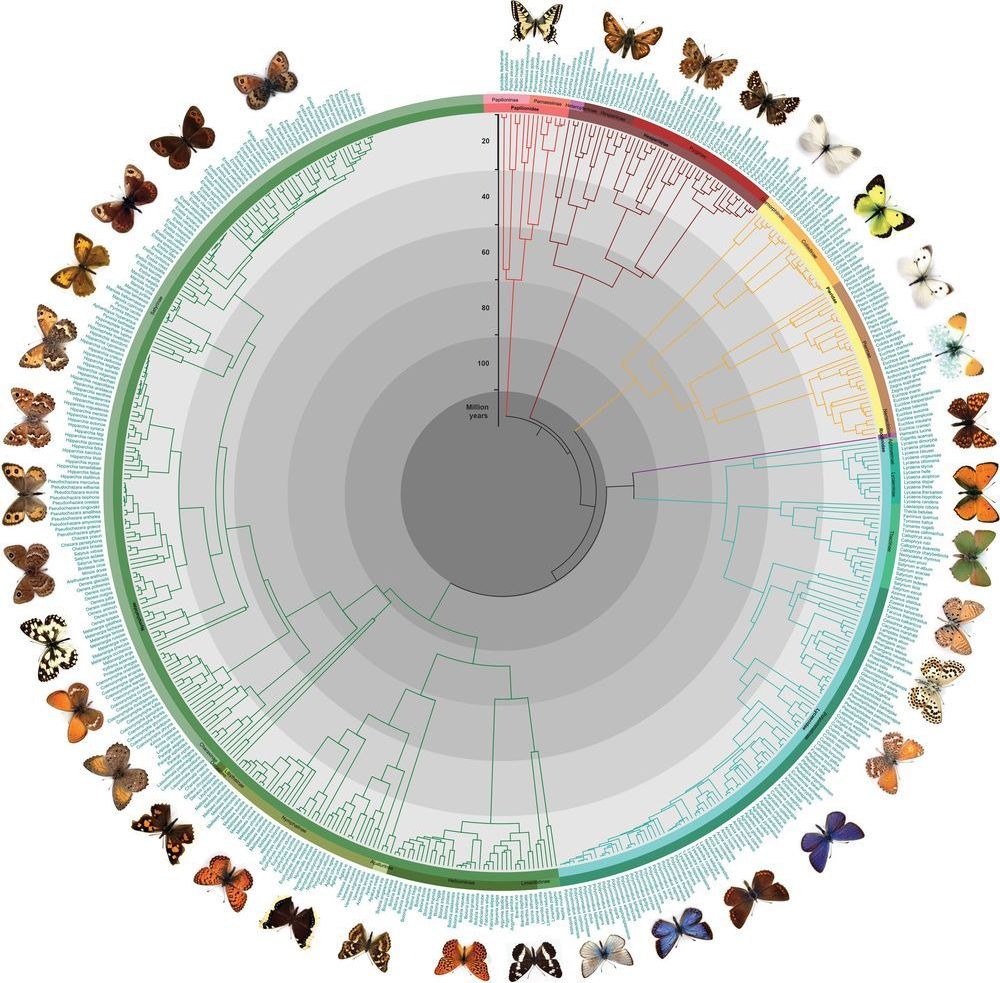For the first time, a complete time-calibrated phylogeny for a large group of invertebrates is published for an entire continent.
In a recent research paper in the open-access, peer-reviewed academic journal ZooKeys, a German-Swedish team of scientists provide a diagrammatic hypothesis of the relationships and evolutionary history for all 496 European species of butterflies currently in existence. Their study provides an important tool for evolutionary and ecological research, meant for the use of insect and ecosystem conservation.
In order to analyse the ancestral relationships and history of evolutionary divergence of all European butterflies currently inhabiting the Old continent, the team led by Martin Wiemers—affiliated with both the Senckenberg German Entomological Institute and the Helmholtz Centre for Environmental Research—UFZ, mainly used molecular data from already published sources available from NCBI GenBank, but also contributed many new sequences, some from very local endemics for which no molecular data had previously been available.
